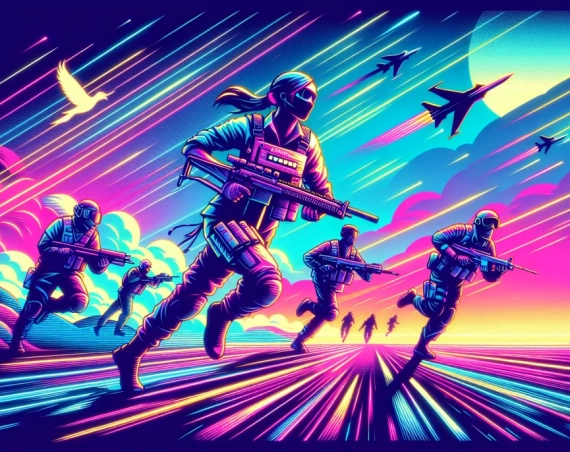
Achieving AAA Game Quality with a Fraction of the Budget: Insights from RuneScape’s CEO
In recent years, the video game industry has witnessed a surge of successful titles developed with modest budgets, challenging the notion that blockbuster hits require multi-hundred-million dollar investments. Jon Bellamy, the newly appointed CEO of Jagex, the studio behind RuneScape, recently emphasized this paradigm shift. During an insightful interview with The Game Business, Bellamy pointed to emerging successes in so-called indie and AA game spaces as evidence that substantial AAA budgets are not the sole path to quality and success.
Why Budget Isn’t Everything in Game Development
Bellamy specifically references the hit RPG Clair Obscur: Expedition 33, developed without a huge AAA-scale budget or team, as a shining example of this trend. He remarked, “You can take a $400 million budget — and there aren’t many of those left — and you can still take a swing with that kind of project. But you can also take a swing with a tenth of that and deliver not so different results if you get it right.”
This insight reflects a growing recognition across the industry that creativity, vision, and efficient use of resources often matter more than sheer financial input. According to a 2024 survey from GamesIndustry.biz, over 60% of newly launched successful games featured budgets under $50 million, a substantial drop from AAA norms.
The Rise of AA Games and Their Growing Influence
- Definition of AA games: Mid-tier games balancing quality and cost, often developed by smaller teams than AAA titles but aiming for rich experiences.
- Key examples: Clair Obscur: Expedition 33, Hollow Knight: Silksong, and Rusty’s Retirement.
- Industry perspectives: Former PlayStation head Shuhei Yoshida described Clair Obscur as a “perfect balance” of AAA ambition and AA budget with an independent vision.
These titles demonstrate that smaller budgets, when combined with focused development and innovative design, can produce games that resonate deeply with audiences. Moreover, the reduced scale helps avoid the logistical challenges and human costs associated with massive development teams.
Challenges of Expansive AAA Budgets
François Meurisse, COO and producer at Sandfall Interactive (developer of Clair Obscur), voiced critical perspectives on ballooning AAA budgets. He noted, “There are plenty of games made with very large teams and huge amounts of money that don’t land,” highlighting the risk and human cost of such projects. This echoes industry-wide concerns that super-large budgets can lead to inefficiencies, prolonged development times, and escalating crunch periods, which negatively impact developer well-being and project outcomes.
The trend towards more conservative budgets aligns with shifts seen in AAA development strategies. For instance, Rockstar Games, known for hits like GTA 6, is one of the few studios still managing projects with budgets in the hundreds of millions, supporting vast teams. However, a market analysis by The NPD Group in 2025 notes an increasing appetite for AA and indie games among consumers seeking diverse and original experiences.
Case Study: Clair Obscur: Expedition 33
This French-developed turn-based RPG exemplifies how moderate budgets can deliver compelling gameplay and narrative depth that rivals larger AAA productions. The project garnered praise for its art style, storytelling, and innovative mechanics without the overhead of massive teams or spending.
Shuhei Yoshida’s endorsement underscores the industry’s recognition of this evolving segment, suggesting a strategic future that embraces diverse development models.
Implications for the MMO Market and Jagex’s Vision
Jagex’s new CEO Jon Bellamy also outlined ambitious goals for RuneScape’s position in the MMO landscape. He envisions making it the second-largest MMO in Western markets within five years, trailing only behind World of Warcraft. This intention reflects a strategy focused on sustainable growth rather than competing in a risky AAA arms race.
The MMO sector exemplifies how balancing investment and innovation can drive community engagement and long-term success. Recent MMO expansions, like Elder Scrolls Online’s integration with new IP content, and Monster Hunter Wilds’ incorporation of MMO-style mechanics, highlight the popularity of such thoughtful approaches.
Key Takeaways for Developers and Publishers
- Budget efficiency: Investing wisely can yield results comparable to large-budget projects.
- Creative vision: Innovative indie and AA titles continue to shape new industry standards.
- Human factors: Smaller teams often foster healthier work environments and agility.
- Market diversity: Player preferences are broadening to embrace varied styles and scopes.
Conclusion
The insights shared by Jon Bellamy and echoed by industry figures suggest a transformational moment for the video game industry. Large-scale AAA projects with $400 million budgets are becoming less dominant, while intelligent, focused development with significantly smaller investments is gaining momentum. This trend not only democratizes game creation but also fosters innovation and sustainability in an industry often challenged by rising costs and workforce challenges.
As demonstrated by games like Clair Obscur: Expedition 33 and others, the future of gaming may well lie in quality and vision over sheer budget, offering players diverse and engaging experiences without the traditional financial risks.
References:


